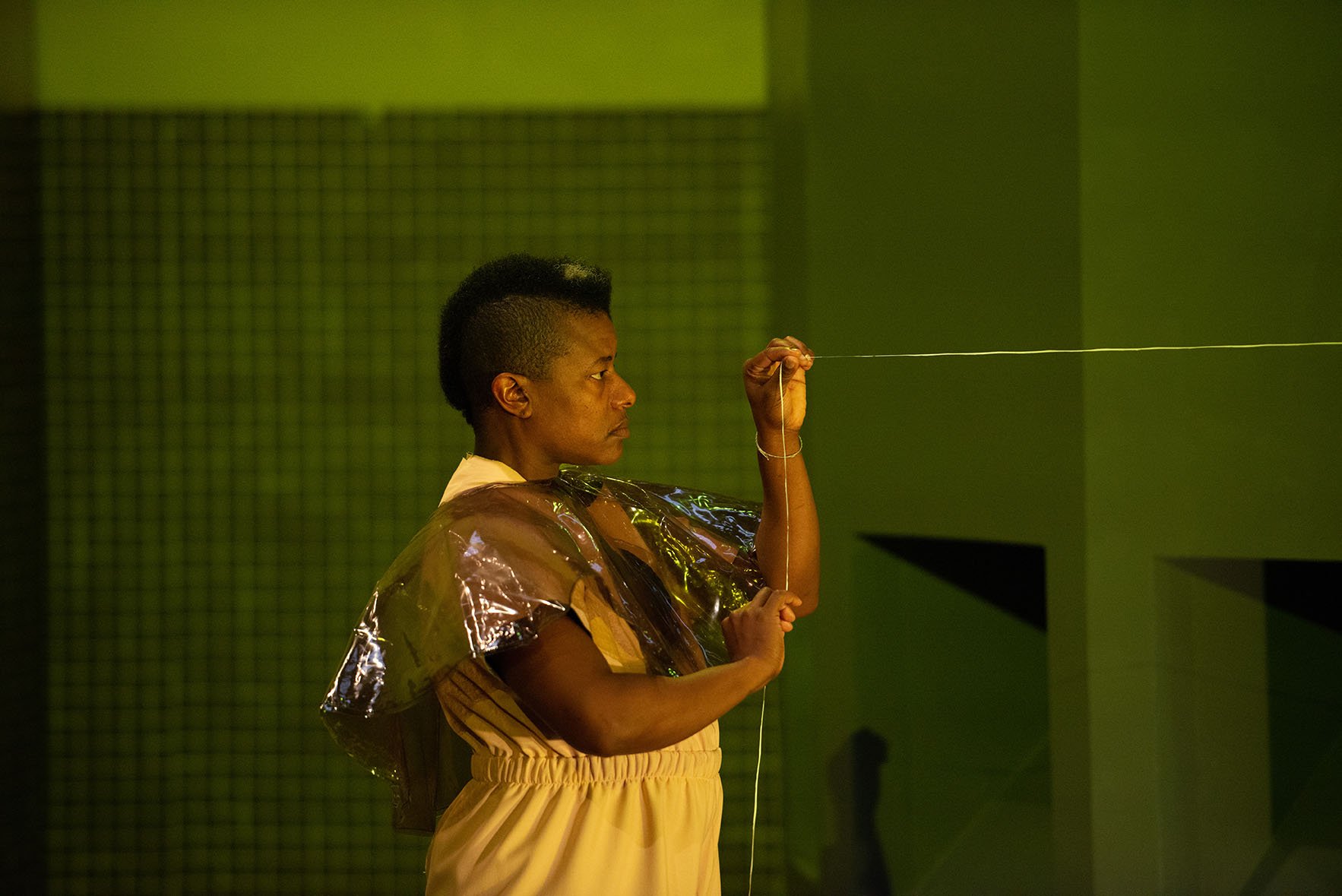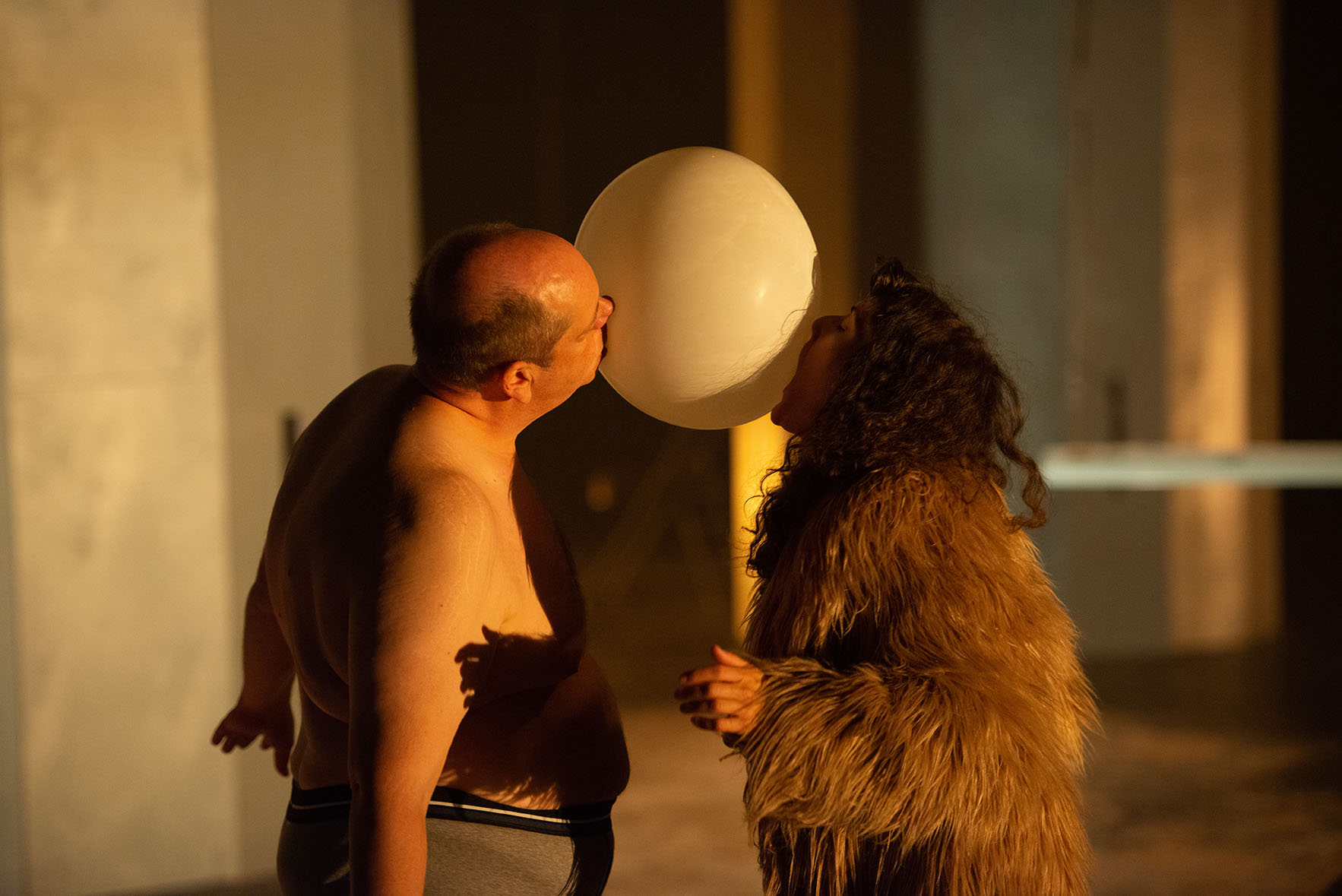With the help of set designer Mimi Lien, Philadelphia-based Pig Iron Theatre Company's Superterranean was crafted around the space first. Set designer Mimi Lien came on board first, followed soon after by lighting designer Barbara Samuels. Read Part One and Part Two.
The sound design was similarly crucial to the development of Superterranean. “Even in our early workshop, we tried devising with text, and it never felt right. We knew that music would do some of the work of that,” Lien explains. “We definitely were looking for someone who was not only a sound designer. I felt an impulse that it wanted to be electronic in some way but not in the usual music definition of the world. We listened to a lot that was electronic feeling but it was too cold.” Lien and artistic director Dan Rothenberg talked to a lot of possible sound designers and composers before finding Lea Bertucci through her performances at JACK. For Lien, Bertucci’s work “sounded like collaged sound art but definitely has a kind of organic feeling to it. Coincidentally, she has a day job working at Cooper Union in the architecture school.” This connection to architectural discourse was serendipitous.

Bertucci does most of her work outside of traditional theater, which was beneficial in such a non-traditional process. “I was grateful to have a background as an improvising musician, to be able to find ways of responding in real time to actions on stage. I realized quite late in the process how crucial the sound is to the work. Because there is no dialogue, the sonic space to fill is vast. There is continuous sound for the entirety of the piece, which is also a big difference between this show and something more conventional.”
Like Lien and Samuels, Bertucci “was most interested in moments when the sound, lights, and architecture were fully integrated. Moments when there are intense machine sounds emanating from the column and stark colored lighting, or in the final section, when the vast space is exposed with multiple columns, are moments in which this design is at its best.”
Bertucci worked closely with the production sound engineer Toby Petit to achieve her goals.
“I designed the layout for the speakers and the system was spec'd by the engineer, Toby Pettit,” she says. “Many specific equipment choices were made with budget in mind while trying to achieve the design I had proposed.” She developed the soundscape using Ableton Live which was then converted into QLab by assistant sound designer Amanda Hannah.

As the process developed so did the sound design, and Petit worked closely with Bertucci to match the system to her needs. He used mostly L-Acoustics speakers, provided by Bauder Audio Systems, with a few additional speakers to serve specific design needs. He explains, “The more that the company developed the piece, the more they found that Lea Bertucci's compositions needed a powerful PA to be presented in the large, unforgiving warehouse-style space.” In collaborating with Bertucci and the rest of the artists, “My number one goal was to create something that could accurately represent Lea and Dan's visions for the piece, while still being mindful of the limitations imposed by our budget and the space. Through rehearsals in the space we found ways to tweak the system to best suit our needs and play back Lea's bespoke compositions consistently for audiences.” Petit developed a robust 7.1 surround system with enough headroom on each channel to almost overpower the audience.
Knowing the space was really the main character, Bertucci “designed the sound system with speakers physically embedded into scenic elements, so the sound at times was coming from the set itself. [She] also had a 6-channel system surrounding the audience on risers, to achieve a more complex form of spatialization. The spatial aspect of the sound was integral to the work, which allowed the sound to exist in direct conversation with the set.” Petit knew that the speakers inside the set pieces of course didn’t want to be visible: “In order to fit speakers into the moving set columns, and to leave enough space for props, costumes, lights, and effects that also need to share the same area, we focused speakers straight down and ‘bounced’ sound off of the angled chutes inside the moving pieces, as opposed to cutting holes in the wooden faces to point sources directly at the audience.” The entire process was a challenge given how late in the process things were changing and developing: “Our biggest challenge was navigating our time to rehearse in the space, which was also the only time that Lea could compose her unique design. At any time, there were three different playback computers sending and receiving 14 channels of audio simultaneously to each other and the console, which becomes challenging when working under a limited budget.”
Ultimately, this alternative approach to authorship created a piece of genre-bending performance. For Lien, “I think the successful thing was figuring out how the people relate to the set. A lot of the original proposal for the design were kind of cavernous kinds of spaces. There was one that I proposed having a giant vacuum. I think the design we ended up with, not perhaps the space I always dreamt of making, is a kind of space that speaks about this kind of infrastructure but also allows some purchase for the actors.”